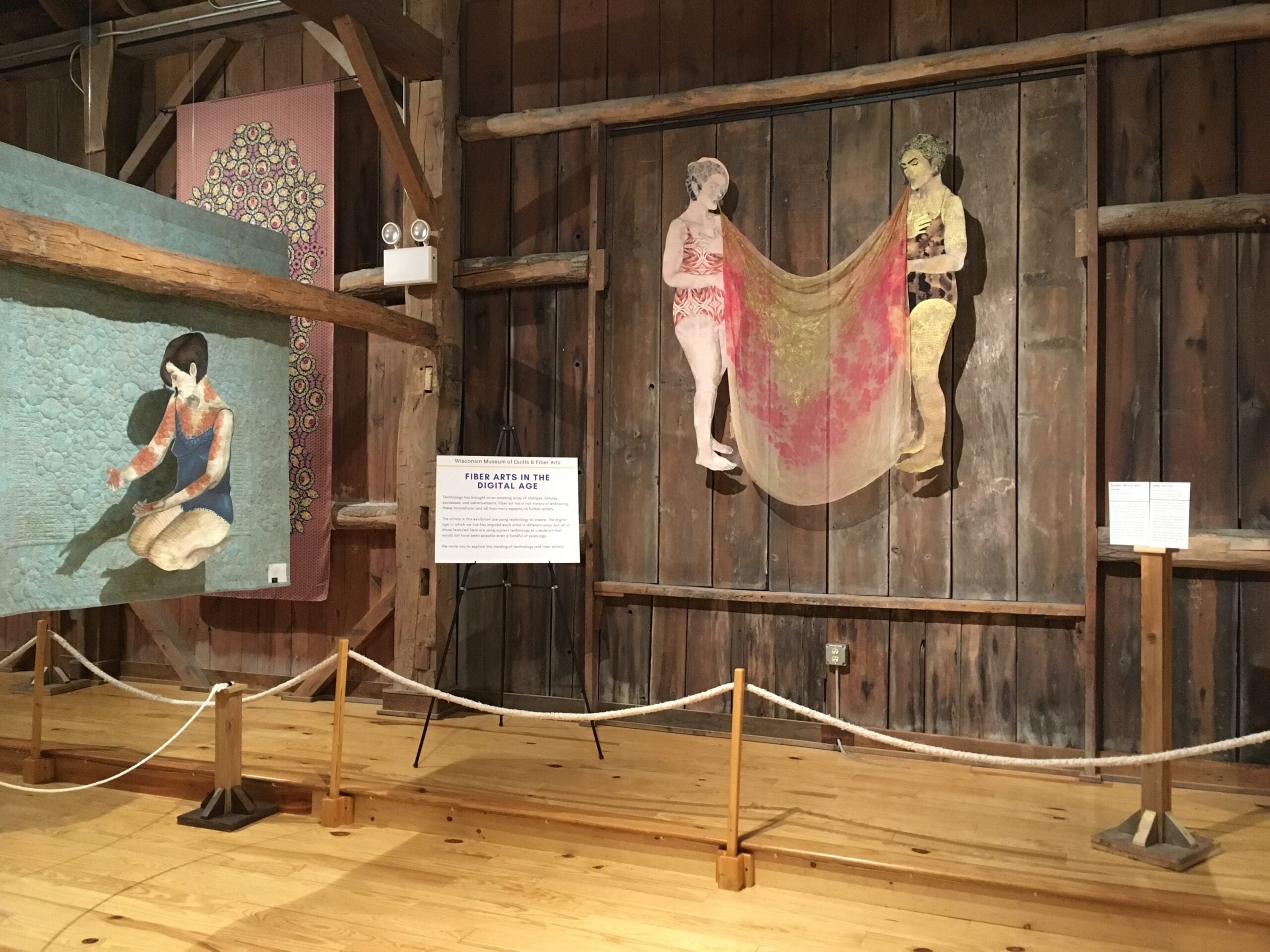The Southeastern region of the state is experiencing an outbreak of Legionnaires’ disease, a severe form of pneumonia, with a total of 12 cases reported so far. We learn more about the disease and the Wisconsin outbreak from a specialist. We also hear about a fiber art exhibit showcasing textile art in the digital age, and we talk about how policy changes could affect America’s problem with alcohol addiction.
Featured in this Show
-
Fiber Arts Exhibit Explores Technology's Impact On Art
Becka Rahn can turn a paper collage into clothing.
The Minnesota artist scans the collage into Adobe Photoshop to create a repeating pattern. That design is then sent to Spoonflower, a digital printing company that prints custom designs on selected materials.
Also with the help of Photoshop, Jill Ault creates quilts by slightly altering a repeating pattern, similar to looking through a kaleidoscope.
In celebration of the way technology has changed the face of the textile and art industries, fiber art by Rahn and Ault is featured alongside works by 13 other artists in an exhibit at the Wisconsin Museum of Quilts & Fiber Arts in Cedarburg.
Museum curator Emily Schlemowitz said fiber arts incorporates lace-making, quilting, embroidery, rug hooking and weaving, among other types.

Installation view of a work by Meredith Re’ Grimsley in Fiber Arts in the Digital Age at the Wisconsin Museum of Quilts & Fiber Arts, 2018. Photo courtesy of the Wisconsin Museum of Quilts & Fiber Arts“There’s a long history of makers using natural and synthetic fibers to create works that can be utilitarian, but also phenomenal works of art,” she said.
Schlemowitz said the goal of the exhibit is to feature artists whose work weaves in some of the newest technologies, for example advancements made in smartphones or in printing technology.
Some of the appeal is that these new technologies allow artists to curate works in their own homes or studios, expanding innovation and accessibility to these forms of art.
For example, Meredith Re’ Grimsley, from Pennsylvania, can make figural work by starting with watercolor paintings that are photographed and printed in her home studio.
“I think that’s really key,” Schlemowitz said of the ability for artists to create their pieces from the comfort of home.
The exhibit features all kinds of art, from quilts to multimedia to cyanotype, Schlemowitz said.
“We really tried to curate many different kinds of fiber arts into the exhibition,” she said, noting that each of the 15 artists have at least three pieces each that are displayed.
The exhibit focusing on fiber arts runs through Sunday, Jan. 13.
“I hope people take away how diverse and phenomenal fiber artists are and what they’re working with today,” Schlemowitz said.
The museum is located on an old German farmstead in a converted barn retrofitted to be an exhibition space. In January, the museum will host “Native Fiber,” an exhibit exploring contemporary Native American fiber art.
-
What's Behind The Legionnaires' Outbreak In Southeast Wisconsin
Eleven cases of Legionnaires’ disease have been reported at University Hospital in Madison since late October. On Central Time today, we talk to an infectious disease specialist about what the disease is, and how its spread.
-
Fiber Artists Embrace Technology
Fiber art– from lace making to quilting to embroidery work, has a long history and makers using fabrics, yarns, natural and synthetic fibers continue to create works of art today. We talk to the exhibit curator at the Wisconsin Museum of Quilts and Fiber Arts about their current exhibit, “Fiber Arts in the Digital Age”.
-
Analyzing The Policies To Reduce Problem Drinking
According to the U.S. Centers for Disease Control and Prevention, alcohol is to blame for the deaths of 88-thousand people annually, shortening the average life by about 30 years. We evaluate the policies in place to save lives and reduce the amount of problem drinking in America.
Episode Credits
- Rob Ferrett Host
- Natalie Guyette Producer
- Rachael Vasquez Producer
- Bill Martens Producer
- Emily Schlemowitz Guest
- Megan Meller Guest
- David Jernigan Guest
Wisconsin Public Radio, © Copyright 2024, Board of Regents of the University of Wisconsin System and Wisconsin Educational Communications Board.


